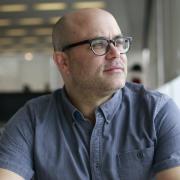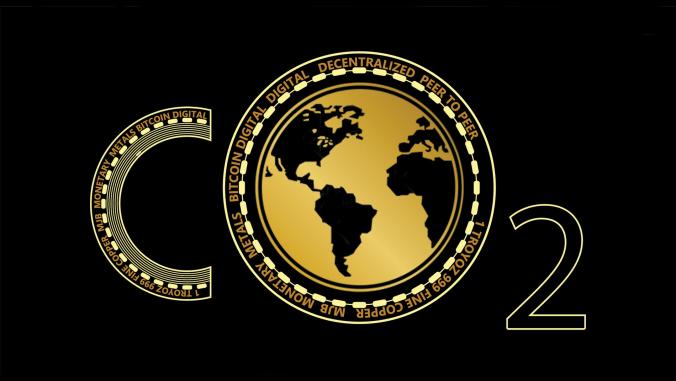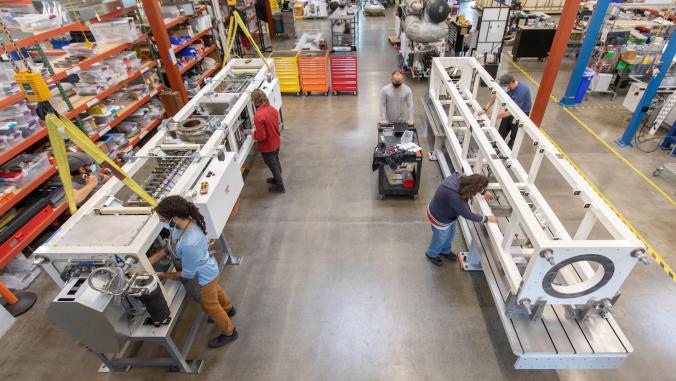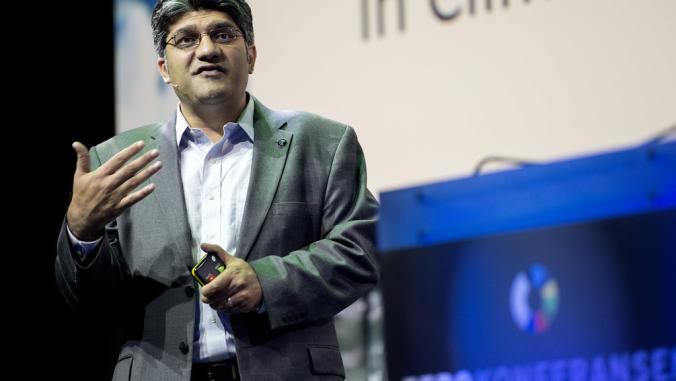GE's Innovation Avalanche
<p>Jeff Immelt has announced 12 major venture capital investments and five winners of its crowd-sourced Ecomagination Challenge. This first round of winners highlights GE's current and future focus on smart grid and energy management technologies.</p>

In New York yesterday, GE announced two big steps in its Ecomagination Challenge program. The company unveiled 12 investments, totaling $55 million, as the first round of its goal to put $200 million to work in power grid technology startups over the next 18 months.
Second, GE announced five $100,000 "Innovation Awards" for still- developing technologies identified from its novel effort to crowd source innovative energy technology opportunities from the Web. This batch included two of my favorites: WinFlex, which is developing a collapsible wind turbine rotors, for easier assembly, and IceCode, which is electrifying wind turbine blades to prevent power-sapping ice build-up.
In the big money category, GE and its venture capital partners are putting up $55 million into 12 startups, established companies and one academic program. Winners get more than investment funds. They'll also have the benefit of warp-speed product development with the help of GE's engineering and sales troops. Plus they'll get guidance and financial help from leading VCs, including Emerald Technology, Foundation Capital, Kleiner Perkins Caulfield & Byers, and Rockport Capital.
For GE, the key is cultivating innovation from beyond its four walls. "What do I do? I've got 45,000 engineers and innovators, and 45,000 sales people. I can drive innovation at a scale these guys can't do," said Jeff Immelt, GE's CEO and Chairman, at the announcement.
For today's winners, all those engineers and sales experts offer a huge leg up. "For a startup, capital is necessary, but it's never sufficient to build innovation," said Thomas Noonan, the CEO of JouleX, one of the winners, which is making advanced grid-monitoring technology. "The work we're doing with GE though their energy research labs, with access to their network, testing our products, has been extraordinary for a small, early-stage company."
As you'll see in the list below, this first round of winners was long on smart grid plays. This is no accident. Smart grid complements GE's own ambitions in advancing its in-house power distribution and grid management technology.
Smart grid also offers some of the best growth potentials in clean tech, too, as Steve Vassallo of Foundation Capital pointed out during the announcement. While many cleantech plays are focused on the supply side of the opportunity -- whether it's converting photons to electrons, or switch grass to fuel -- they're very capital expensive to take commercial.
Conversely, Vassallo added, opportunities to reduce demand are more capital-efficient, faster to deploy, and not as dependent on subsidies because the solutions can deliver such quick savings to customers.
The headliners of today's announcement were 12 new technologies selected for funding. I'll just summarize the winners here -- click through to the company names for more detailed releases on the technology in development, and read on for details of the five "Innovation Award" winners, too.
What about the outstanding $145 million in investments? Immelt wouldn't specify when the rest will be awarded, but emphasized the process is moving quickly and more announcements will come over the next year or so. Stay tuned.
• ClimateWell (Stockholm, Sweden) makes energy-efficient cooling and heating systems that run on solar-heated hot water rather than electricity.
• Consert (Raleigh, N.C.) is developing demand side energy management technologies to help power producers deploy demand reduction programs.
• FMC-Tech (Shannon, Ireland) makes power line monitoring systems for "medium voltage" -- lower than high voltage long distance lines, but higher than neighborhood power lines -- grids to help deploy related smart grid technologies.
• The Fu Foundation School for Engineering and Applied Science, Columbia University (New York City) is getting funding to help GE, FedEx Express, and ConEd to model and plan the conversion of NYC's delivery vehicle fleet from petrol to electricity.
• JouleX (Atlanta, GA -- JouleX.net) provides a single, network-based, energy-management solution that monitors, analyzes and automatically adjusts the energy usage of a network's connected devices and systems.
• OPOWER (Arlington, Vir.) integrates consumer demographics, energy consumption data and behavioral analytics to induce households to make intelligent choices around power consumption.
• Scientific Conservation (San Francisco) makes a platform that saves energy by tracking and managing energy use in commercial buildings through predictive maintenance of systems such as heating, ventilation, air conditioning, refrigeration, lighting, controls and on-site renewables.
• SecureRF (Westport, Conn) provides technology to secure the transmission of data to and from low-powered, wireless devices that will be used throughout the Smart Grid.
• Sentient Energy (Burlingame, Calif.) develops cost-effective grid monitoring solutions consisting of modular devices and software applications.
• Soladigm (Milpitas, Calif) creates window glazing that saves energy by switching, electronically, from clear to tinted, to control heat and glare.
• SustainX (West Lebanon, N.H.) is developing technology that provides compressed-air energy storage technology that can help utilities bank large volumes of renewable energy.
• SynapSense's (Folsom, Calif.) solutions measure and manage the environmental conditions and power usage throughout data centers, resulting in a 10% reduction in energy consumption in a typical site.
And last, but not least, in the second part of today's announcement, GE also unveiled five winners of its web contest to identify top cleantech innovators, with each project winning $100,000 in grants. There's a heavy dose of digital power grid focus here, too, but two tweaks for turbines that could help push that more mature technology further along.
• Capstone Metering (Carrollton, Tex.) has developed digital meters that use the flow of water to power their operation.
• ElectricRoute (Salem and Hollis, N.H)'s cyber-secure, communications network infrastructure eliminates duplicate sensors and thousands of copper lines running inside a utility's substations.
• GridON (Givatayim, Israel) created a fault-current-limiter to protect the electric grid from disruptions and power outages, increasing the grid's reliability and enabling load growth and generation expansion from alternative energy sources.
• IceCode (West Lebanon, N.H.)'s technology removes ice from wind turbine blades by using high-power pulses, to heat blades from the inside out.
• WinFlex (Kiryat Yam, Israel) produces inflatable rotors for wind turbines from light, flexible and inexpensive cloth sheets made out of composite materials.
Photo CC-licensed by loadmaster.





